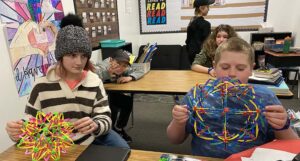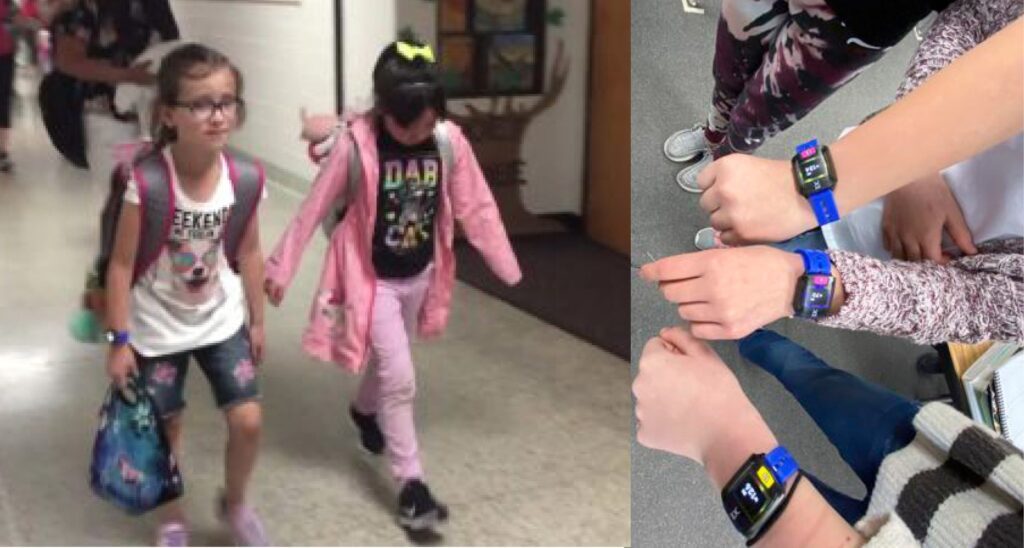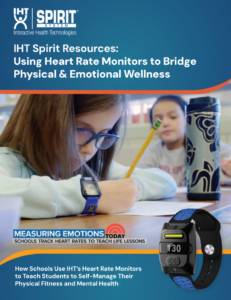An Education Week story published Jan. 13, 2025 details the continued challenges that elementary students have with emotional self-regulation.
The story cites data from a 2024 report published by the National Center for Education Statistics’ School Pulse Panel that said 80% of public schools “say they’re seeing stunted behavioral and socioemotional development in their students.” The story continues to say that, predicably, “student misbehaviors are having a negative impact on learning, as well as teacher and staff morale.”
The story also points out that while 80% of the schools participating in the study reported issues, most survey respondents believe that the social-emotional learning conducted in classrooms has a mostly (76%) positive impact on students. But, it doesn’t take many students who struggle to self-regulate their emotions to impact teacher morale or disrupt learning for the rest of the class.
Why Do Students Still Struggle with Emotional Self-Regulation and What’s Being Done?
The Education Week story suggests that students struggle with emotional self-regulation for several reasons. First, school closures and COVID-related disruptions hindered development of key social-emotional skills. Second, students are likely to be aggressive toward teachers and unwilling to follow directions or stay on task. Third, they are unable to maintain concentration and focus during class.
The story also provides three solutions for schools as they address the issues:
- Explicit SEL Instruction: incorporate teacher- or counselor-led programs that teach students about emotional self-regulation, impulse control and conflict resolution.
- Visual Aids and Tools: Charts and checklists can help students understand and self-manage their emotions.
- Modeling and Practice: Teachers and counselors can model self-regulation techniques and provide opportunities for students to practice those skills.
Schools Find Success Combining IHT Heart Rate Monitors with SEL Curricula
Without suggesting that IHT offers a be-all solution, elementary schools are having success improving young students’ ability to self-regulate their emotions by pairing IHT heart rate monitors with counselor-led SEL programs. Counselors work with students – mostly 3rd through 5th grade students — either individually, in small groups, or full classes to provide a groundwork to self-regulate emotions.
The heart rate monitors serve as a real-time visual aid providing feedback that they might need to employ the strategies counselors are teaching. Teachers can also display a heart rate chart that details what types of emotions students may feel as their heart rate changes using colors
- Blue indicates a resting heart rate or emotions such as calmness, sadness, happiness or fatigue
- Yellow indicates an elevated or moderate heart rate or emotions such as nervousness, excitement, worry or frustration
- Red indicates a high heart rate or emotions such as fear, anger, ecstasy or stress
Most counselors say the colors are key to helping the students see what’s going on with their bodies.
In Colorado, Littleton Public Schools expanded a program that began at East Elementary School after students showed strides using heart rate monitors along with an SEL curriculum. In explaining Operation Dragon Heart, Principal Kelly Card said her team wanted heart rate monitors that the young students could understand.
“We were looking for something that was going to be durable, that was going to be light, user-friendly for students, and we wanted it to look cool,” Card said. “We wanted to give a heart rate and we wanted it to light up and give them a visual representation of what was happening in the moment and that’s exactly what IHT does.”
Along with wearing the heart rate monitors, students took part in a counselor-led SEL class that uses the In Focus curriculum. In Focus delivers age-appropriate content that teaches students to control their impulses and emotions and enables them to calm down and, in Counselor Kim Bailey’s words, re-regulate themselves.
“The vision is to link children with regulating their emotions, being able to physically see what’s happening in their body,” Bailey said. “Then they can associate that with the feeling and they are able to use the techniques we’re using to help calm themselves down.”
The program proved its viability after just a few In Focus sessions, Card said.
“I was able to watch a student in week one who was having an emotional moment where he was struggling,” Card said. “He was upset about things and he was able to look at the number on his and incorporate some of the breathing exercises we had been learning about. He sat and watched the number on his monitor go down and get into his normal range, which was so cool to see….especially for this particular student.”
Operation Dragon Heart proved so successful early on that the NBC Today Show profiled it on their weekend broadcast and the district implemented the emotional self-regulation program at all of its elementary schools.
Colors also proved key for Monroe Elementary School (Colorado Springs, CO) Counselor Maddie Francis, who uses the IHT heart rate monitors with a curriculum focused on Zones of Regulation. A key to her program is teaching students how to differentiate what they are feeling when their heart rate is a specific color.
“We love blue colors, but you have to be able to differentiate,” Francis said. “Are you blue because you’re tired or are you blue because you’re calm and you’re ready to learn?”
Teachers are on board with Francis’ program – she works with 3rd and 4th grade students who teachers have identified as struggling with emotional self-regulation. As Card saw at East Elementary, it didn’t take long to see progress.
“Classroom teachers are sharing that kids are just more aware of themselves and aware of their bodies, which is making a huge difference for them on a behavioral and a disciplinary level,” Francis said. “We’re seeing a huge decrease in calls for support and things like that. The teachers are really happy with the progress the students are making.”
The teachers also understand that students may let them know when they need to take a moment to compose themselves.
“Students are really showing growth in the self-awareness portion of this,” Francis said. “I have students who use the monitor as a way to communicate with their teacher. One told me that he just points to his monitor and the teacher understands the student is asking for a break to calm himself down.”
Along with the real-time feedback from the heart rate monitors, students can also see a graph showing their heart rete throughout their time wearing the monitor. When she meets with her Braham Area Schools (MN) students, social worker Jonelle Klemz focuses on the graph and asks students to explain what they remember about when their heart rate spikes to the yellow or red zones.

A Braham Elementary student uses a Hoberman sphere while wearing a heart rate monitor to see how breathing impacts heart rate.
When she started her program, Klemz spent a week with each class at the district’s elementary school, explaining how the heart rate monitors provided feedback and teaching a variety of calming skills:
- Expand and contract Hoberman spheres while breathing in and out
- Navy Seals Box Breathing: inhale and hold for 4 seconds, exhale and hold for 4 seconds
- 5-finger breathing: tracing fingers while breathing in and out
- Crossing arms across the midline and tapping shoulders
Students wear the heart rate monitors all day, which can give them lots to talk about at the end of the day. The heart rate graph helped one student see exactly how her heart rate rose and fell around an important test.
“One girl, I think she was either fifth or sixth grade, was spiked up out of nowhere into the high yellow, low red. I just kind of looked (at the graph) and wondered what that was,” Klemz said.
The student quickly remembered why her heart rate appeared elevated.
“And she says, ‘oh, I know, that was a hard test and I wanted to do well,’” Klemz said. “Then she turns to me and asks, ‘so, is that what stress looks like?’
“It was awesome,” Klemz said. “I asked if she did the breathing and she said she did. She also said it helped that the test was over.”
Teachers also benefitted from Klemz’ program. Some chose to wear the heart rate monitors along with the students, and they openly shared what they felt throughout the day.
“I looked at a third-grade teacher the other day and he was sitting there, arms crossed, just breathing,” Klemz said. “What a healthy thing to be role-modeling to our kids. And they are all surprised how taking 2-3 minutes of quiet, calm breathing can reset your whole day.”
While working with a fourth-grade class, the students made sure to tell Klemz that their teacher had spent time in the yellow zone during a class discussion.
“The teacher said she didn’t know she was in yellow at the time, but then she explained why she was in yellow,” Klemz said. “They were having a very serious discussion about a problem in the classroom with a lot of kids swearing. She was really being firm about it and that’s when they saw her monitor go to yellow.
“The teacher told them it’s a good learning opportunity because they knew she was very serious and the situation was stressing her out,” Klemz said. “She was able to role model some of the breathing and other techniques to bring her heart rate back down. It’s good learning overall.”
Each program’s success does several things. First, it shows that heart rate technology can be a key tool for helping students learn emotional self-regulation. Second, the feedback brings SEL to life and keeps it a priority. Third, as Klemz explains, students begin to take an active role in figuring out what makes them experience certain emotions.
“The third graders don’t always know if they are hyper because they’re excited or because they are anxious,” she said. “This gives you a chance to learn that about yourself. So I tell them they are scientists and you’re studying yourself. You get to see how different things feel.”


